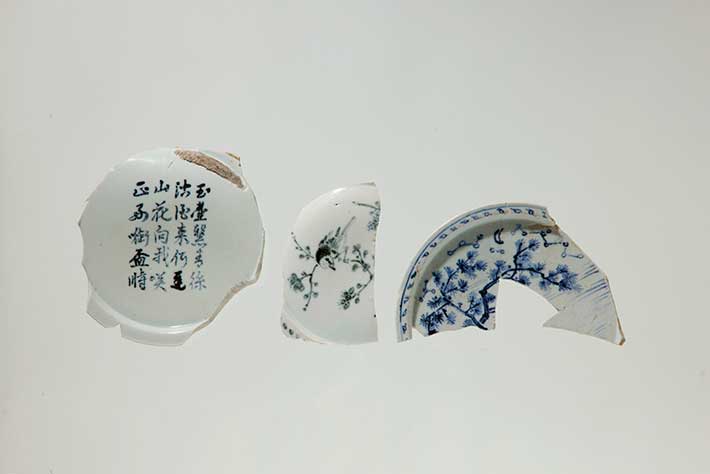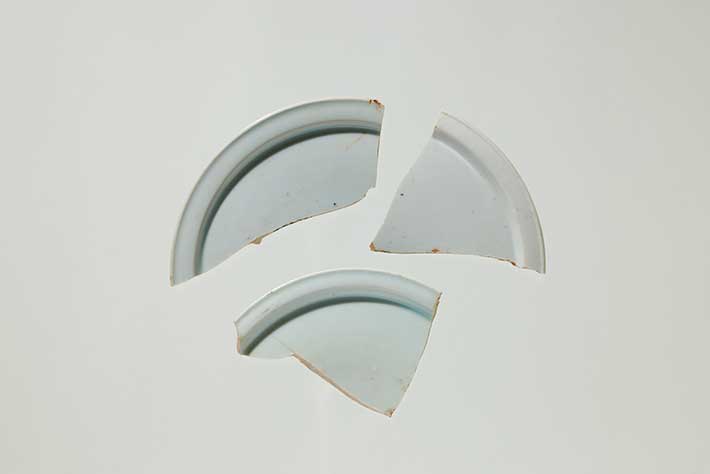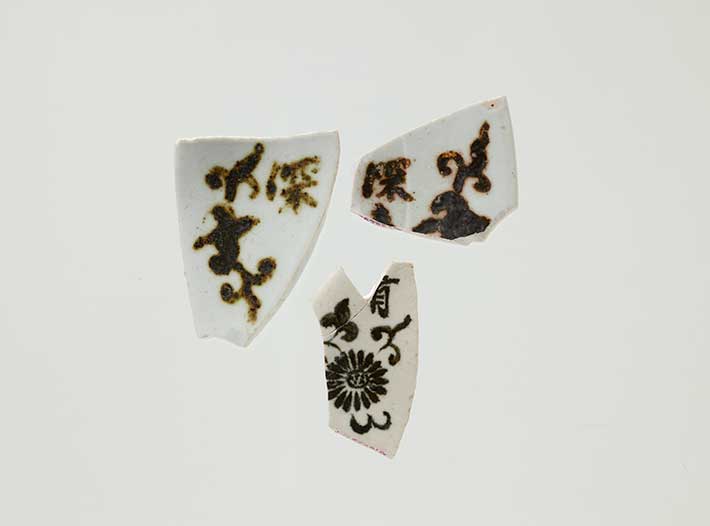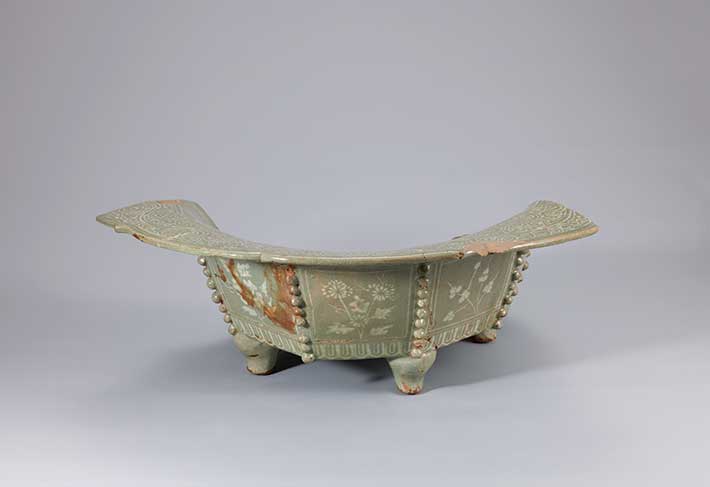Sub-theme1
- Joseon Dynasty, 15th-16th century
- ssu 19367·19369·19370, etc
Excavations conducted in 1964 and 1965 uncovered not only plain white porcelain and blue-and-white porcelain but also inlaid white porcelain and buncheong ware. The plain white porcelain pieces can be broadly categorized into high-quality and coarse varieties. On the outer bottoms of many high-quality bowls and dishes, inscriptions such as cheon (天, heaven), ji (地, earth), hyeon (玄, black), and hwang (黃, yellow) are frequently found. Blue-and-white porcelain was primarily produced in the form of rimmed dishes, featuring common decorative motifs such as Chinese poems, constellations, pine trees, plum blossoms, bamboo, and birds. Particularly notable is the discovery of test-fired fragments bearing various applications of cobalt pigment—presumably trial pieces used in efforts to achieve optimal blue coloration.



